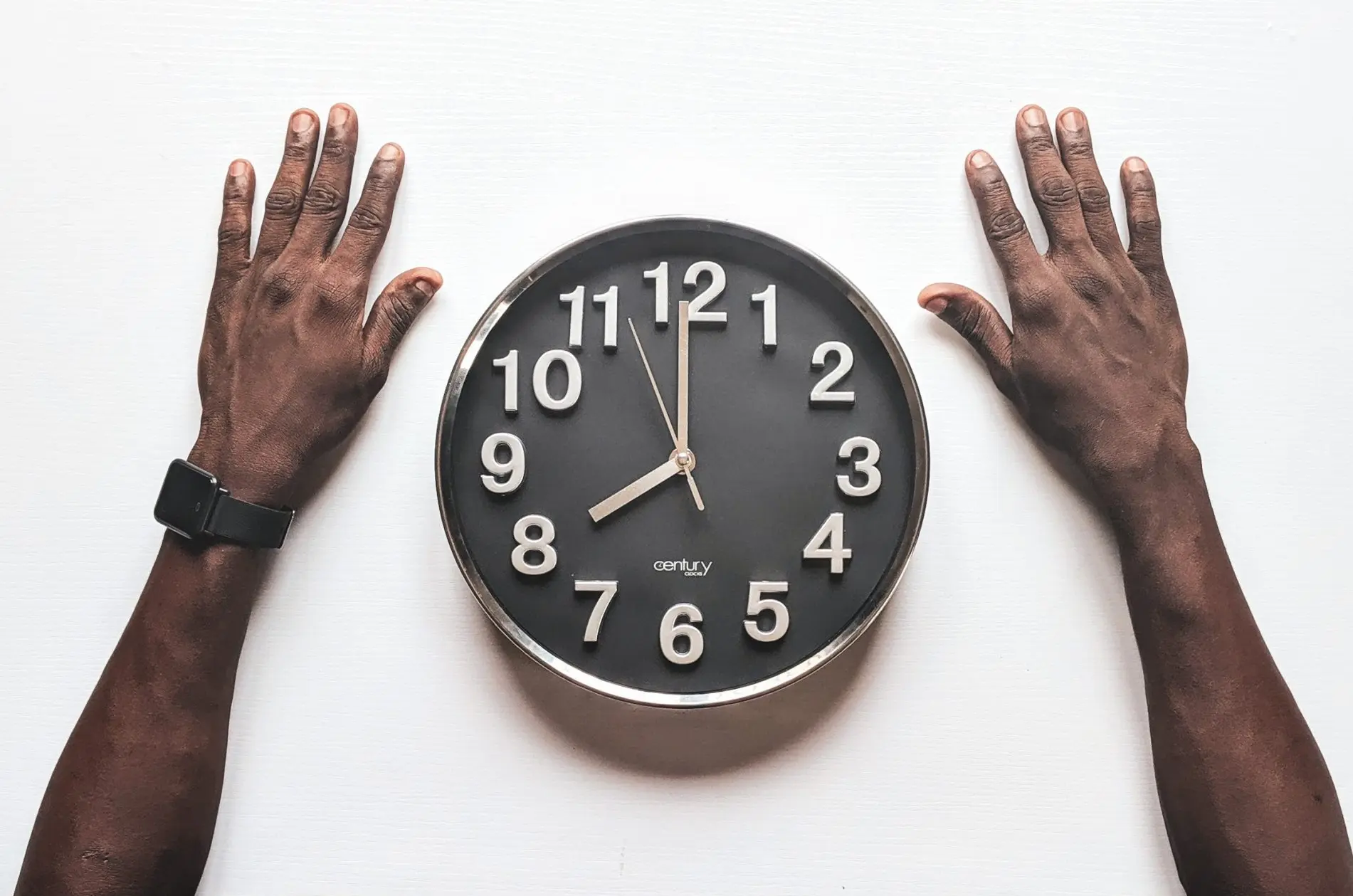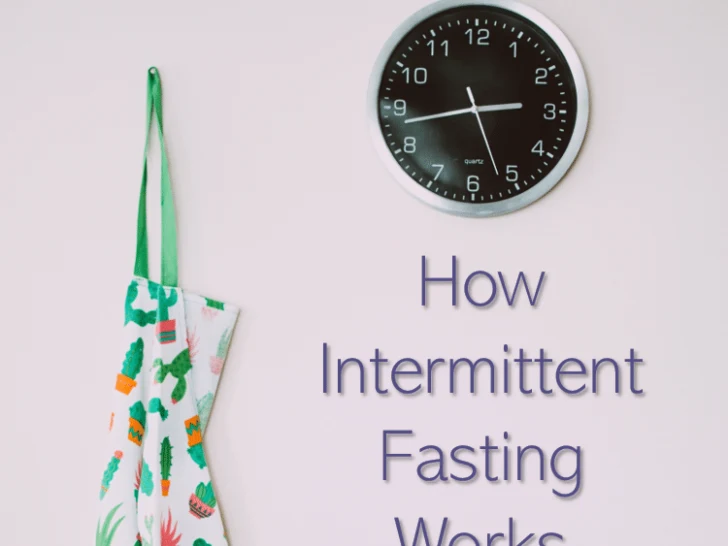Some of the links in this post are affiliate links. This means if you click on the link and purchase the item, we will receive an affiliate commission from the vendor at no extra cost to you. These business relationships allow us to keep bringing you great EatMoveHack content. All opinions remain our own.
Many people have now heard the term “intermittent fasting”. It has seemingly taken the health and fitness world by storm. This article is here to answer the most simple question about this lifestyle – How Intermittent Fasting Works?
In the past few years more and more people have started advocating the benefits of intermittent fasting. You can find a few articles right here on eatmovehack.com from celebrities like Tim Ferriss, Terry Crews, David Goggins, and Alexis Ren touting the benefits they have enjoyed from an IF lifestyle.
But is there more to intermittent fasting that being a celebrity diet fad?
Well, in order to answer this you will need to have an understanding of what IF truly is and what it is not.
How Intermittent Fasting Works?
Intermittent fasting, in the most basic sense, is the alternating periods of eating (often called feating) and not eating (fasting).
![]()
So, this means that every person intermittently fasts every single day of their life. It is part of who we are (as well as all other animals in the world). We do not consume calories all the time. We cycle through feasting and fasting.
Well, if we all already IF then why has it garnered so much attention. You have most likely heard all the stories of weight loss, metabolic improvement, autophagy, and general physical/mental improvement through the use of IF.
The difference between the way that most people fast (in other words sleep) and the way that IF fast really only relates to duration of the fasting period and the frequency of the fasting protocol.
Standard American Diet
The standard American fasts every single day. This fasting normally occurs while they are asleep. The fast is broken with, what has been historically termed, the most important meal of the day – breakfast. The concept of daily fasting is baked into the word itself – we “break the fast” with breakfast.
Everyone has a break-fast meal at some point in the day (except those fasting beyond 24 hours, but we won’t get distracted by that at this point). We typically think of breakfast being an early morning meal, but the term simply refers to the meal that breaks the fasting period.
Now, most Americans will break their fast in the morning with some kind of “breakfast” food – eggs, bacon, cereal, bagel, etc. This will be their daily fasting period. They will not fast again until they enter a state of sleep the following evening.

During the day, most Americans will eat multiple times.
American Eating Schedule
Breakfast:
The day begins with breakfast, let’s say at 7 AM. On average it takes between 4-5 hours for your stomach to fully empty after eating a meal.
Snack:
A snack will be consumed around mid-morning by most people, because that is what is believed to be necessary to increase metabolism and keep the fire burning. Certainly not enough time has elapsed between breakfast and this mid-morning snack to allow the stomach to be emptied.
Lunch:
Then, lunch time rolls around. The stomach is re-filled with more calories.
Mid-Afternoon Snack:
To avoid the mid-afternoon crash (and to keep the metabolism burning) most people will reach for a mid-afternoon snack as well. Stomach is still not empty.
Dinner:
By the time that dinner rolls around the stomach is just finishing off lunch and the mid-afternoon snack – it is re-filled at this time.
Dessert:
A lot of people, after dinner, will reach for some kind of dessert to finish off the day. Let’s say that this happens at 9 PM.
So, from 7 AM, when you broke the fast with your first calories of the morning, until 9 PM when you consumed your last, your body was processing food all day long. There was fuel, in the form of food, in your stomach all day long. As such, your body was not required to enter into a fasted state because it had exogenous fuel the whole time.
This article is not structured to talk about good food or bad food. It is not here to say whether you should eat 6 times a day or not. Rather, it is here to talk about what makes intermittent fasting different than the standard American “fasting” method.
How is Intermittent Fasting Different?
The difference between the standard American routine and IF is duration. This is one of the key points to take away in developing your understanding of how intermittent fasting works.
From above, most people will stop eating around 9 PM and break-fast around 7 AM. This is a 10 hour fasting window.
This doesn’t take into consideration the time between stomach emptying. Purists of IF will insist that no one “fasts” until their stomach is empty. If you stopped eating at 9 PM you may not have an empty stomach until 2 AM. Purists would say that this is when your fast begins. It would be a 5 hour fast from 2 AM to 7 AM. This is too hard for most people to manage though. Most people just run from when they last consumed calories.
One important note – you will notice that I am using the term “calories”. This includes food and calorie containing drinks. There is also a lot of research out to suggest that non-caloric things, like sugar-free sweeteners, can also break a fast. That is beyond the scope of this article.

It All Comes Down To Time
IF is different because the length of the fasting period is extended. So, if you would normally consume calories at 7 AM, then you push that out further to say noon, or 2 PM or 8 PM. In this series we will talk about the different fasting protocols, but this is just giving you examples of using extending fasting periods.
At the end of the fasting period you will have “breakfast”. This meal will break your fast. I do agree that your break-fast meal is the most important meal of the day. This is when you re-fuel your body after a period of no fuel. I just do not agree that it needs to be waffles at 7 AM.
That, in a nutshell, is the difference between IF and a normal routine.
Isn’t Fasting a Fancy Word for Starving?
This is a common question and it demonstrates that most people do not understand how intermittent fasting works. The concept of fasting sounds, to the unfamiliar, to be very similar to what we think of as “starving”.
In my opinion, the use of the word “starving” in developed countries has caused this confusion. Many people will say they are “starving” between lunch and dinner if they have not had their mid-afternoon snack. They say this, knowing that they are not really starving.
To starve is to perish from lack of food. It generally involves inability to access food. Often, those who are starving do not have means, within their control, to access food.
Fasting is often voluntary. It is a state of self-deprivation of food for various reasons (health, religious, etc.). Those that are fasting usually have within their control the ability to bring the fast to and end.
Starving and fasting both involve the lack of consuming food. However, they are not the same.
Now that you know how intermittent fasting works, are you ready to get started?
Intermittent fasting might not be right for you. Check and see if this diet is more what you need.

